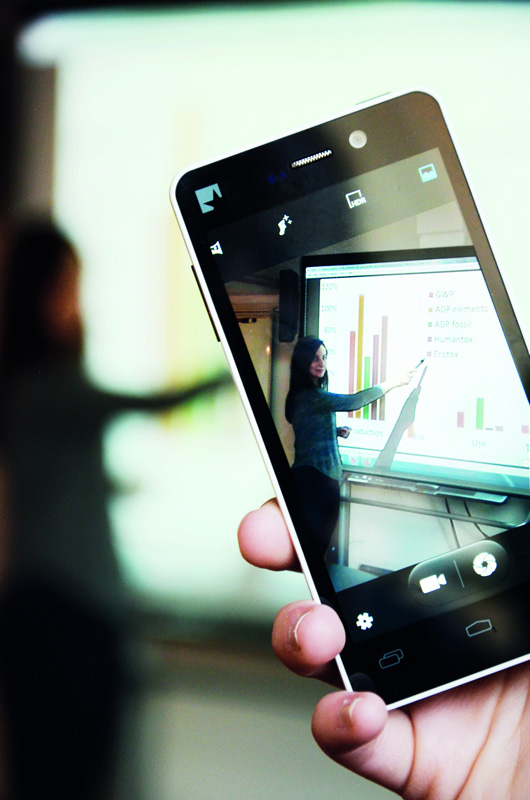Sound Life Cycle Assessments for sustainable design decisions
Electronic devices with a long service life can make an important contribution to a sustainable society. Fraunhofer IZM supports manufacturers in developing these kinds of product concepts, and in optimizing them to be environmentally friendly. The comprehensive life cycle assessment of the modular Fairphone 2 was able to demonstrate the environmental effects of producing a smartphone as well as how a modular approach can lead to a reduced environmental footprint.
The carbon footprint, as a measure of the Fairphone 2’s contribution to climate change over a service life of three years, is the equivalent of approximately 44 kg of CO2 . 80 percent of this is generated in the manufacturing phase. The complex manufacture of semiconductor devices and circuit boards is responsible for most of the CO2 production. The modularization of the smartphone also places other stresses on the environment, particularly in the case of board-to-board connectors and modular housings.
The increase in circuit board area needed for the additional plug connectors also has an effect on the environmental life cycle impacts. All the same, these environmental effects are more than compensated for if users can fi x their own device should it become damaged in a simpler and cheaper way by replacing individual modules, thus keeping the device in use. Compared to the electronic parts, the display and the battery make a lesser contribution to greenhouse gas emissions, but are frequently the components that dictate the device’s service life. That is why it ought to be easy to replace the battery as its capacity dwindles and the display if it gets damaged in order to keep using the electronic parts for as long as possible. Modularization also offers the ability to upgrade a smartphone to allow it to »grow« with users’ requirements, instead of having to replace it with a new device. This does, however, increase the demands on a device with regard to long-term compatibility and reliability.
In any event, the lessons learned from a sound life cycle assessment make it easier to make design decisions, adapt product and business strategies, and derive priorities for eco-optimization of individual manufacturing priorities.
 Fraunhofer Institute for Reliability and Microintegration IZM
Fraunhofer Institute for Reliability and Microintegration IZM